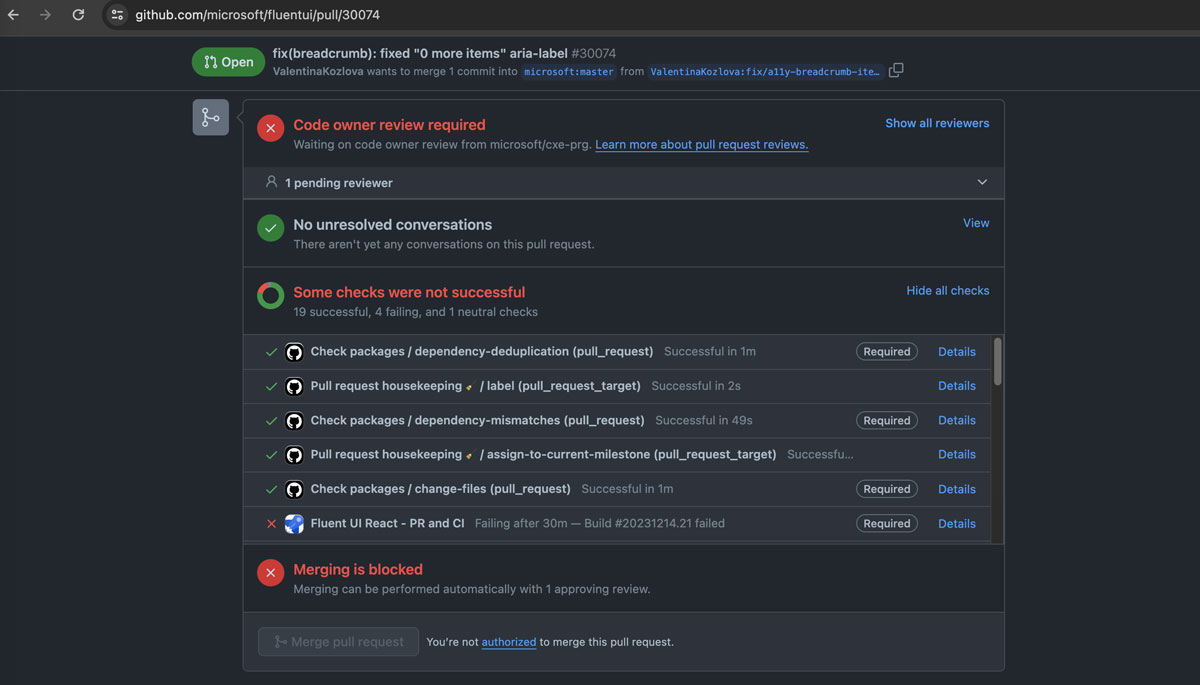Continuous Integration (CI)
Continuous integration is a DevOps software development practice where developers merge code together in a central repository, after which automated builds and tests are run. CI has become commonplace when code is submitted and reviewed on GitHub, GitLab, Azure DevOps, and more.
Hosted CI in a nutshell: write code & tests, add an integration to source repository, enable CI builds for the project, and push code. Of course that’s a big simplification of all the steps...and some platforms are easier than others (looking at you, Azure DevOps and Jenkins).

How CI can help with accessibility testing
CI that runs on every PR and build can help to encourage testing on more platforms, prevent regressions, and enable a culture of test coverage. When accessibility is part of this, it can democratize accessibility testing and awareness to more members of the team.
You can also track who broke a build, including accessibility tests!
Should accessibility issues fail a build or not?
Automated accessibility tests can run as part of CI checks. Should accessibility tests fail a build if issues crop up? It depends.
The feature tests you write for keyboard interactions and other core functions should fail builds. You know more about a component’s feature requirements than an accessibility test API like Axe will, so you can be more targeted and effective.
Linters and CI builds
Lint rules like TypeScript often fail builds. Whether accessibility lint rules should fail builds is a valid question! It’s worth experimenting with your team and figuring out a process that adds just the right amount of friction, much like snapshot testing.
Other accessibility test APIs
Other accessibility test APIs are better candidates for failing in development mode or under certain conditions.
Perhaps you could run test APIs like Axe on a pre-commit hook or builds for your dev environment but not for later environments where other things have been checked.
By running accessibility test APIs in later build pipelines, you might risk finding issues that are irrelevant to the current sprint. Or the tooling can’t quite tell what’s a valid issue or not, something that can’t be programmatically determined. You would want that stuff to be caught much earlier in your deployment cycle.
It’s better to configure automated test tooling to meet your needs in various test flows than to disable accessibility tests entirely.